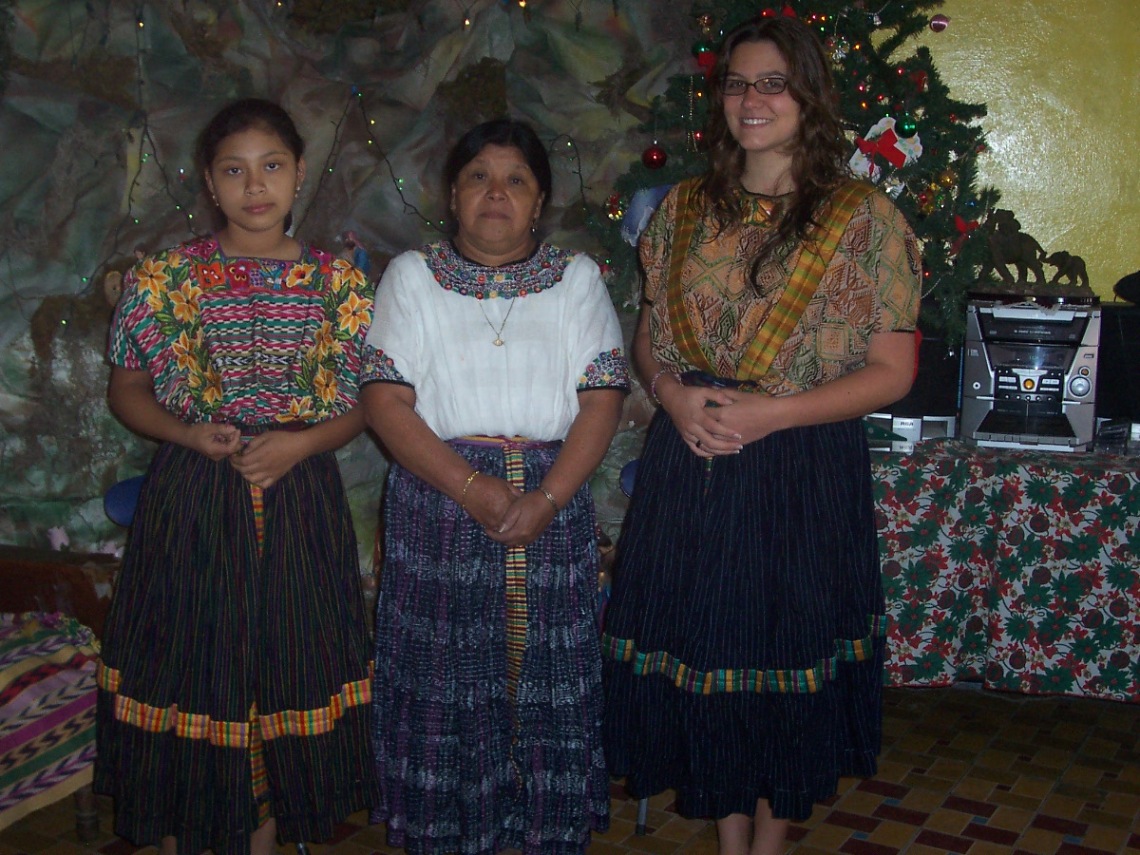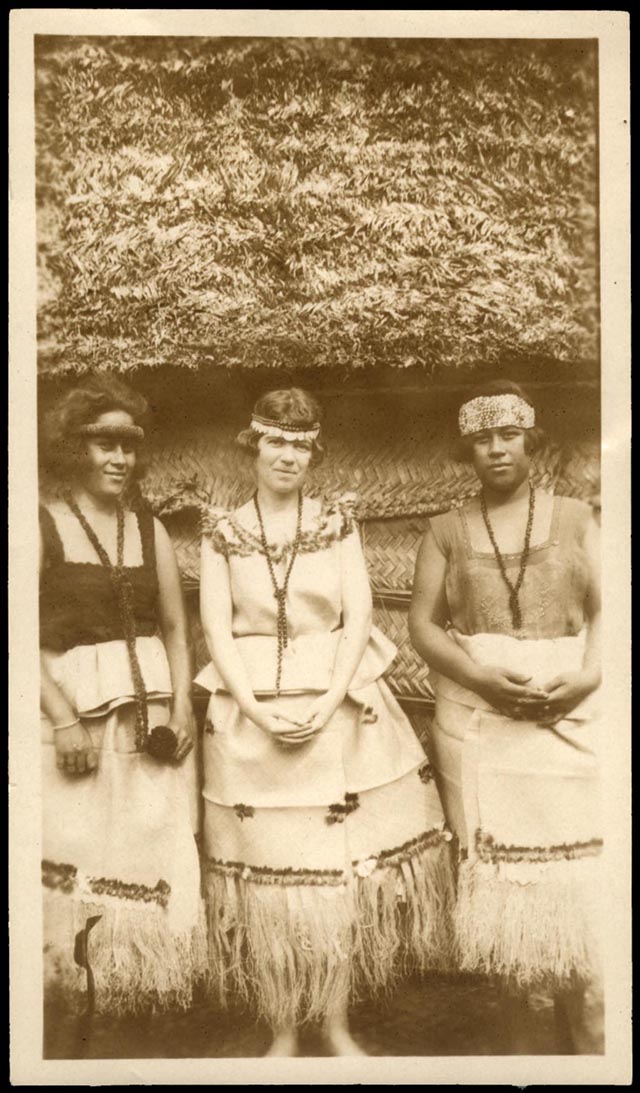of 
I recently came across this photo from my first anthropology “fieldwork” project in Quetzaltenango (“Xela”), Guatemala, in January 2006. When I was there, I passed the house/tienda (shop) of the older woman, Lidia, on my daily walks around town. Occasionally I stopped in for a Coke or to pick up some groceries for the house (I remember many loaves of white bread.) One day, Lidia invited me into her home, nestled at the back of the store, and asked if I would like to try on a traditional traje (dress). I accepted her invitation without hesitation.
The traje was extremely tight. I think it was one of her daughter’s outfits, and she was a bit smaller in stature than me. Or maybe it was all the white bread. I recall my excitement of getting to try on the traje was a sign that I had achieved an important goal during my fieldwork – building rapport with local people who allowed me into their world.
Thinking about my time in Guatemala has provided me with an opportunity to reflect on how my understanding of anthropology has changed over time. If I had to choose one word to describe the change, it would be “drastic”.
When I was an undergrad and still learning the fundamentals, my perspective was framed by an old fashioned, colonialist idea of anthropology – going into an exotic, foreign culture, observing people different than me, participating in their culture, collecting data, coming up with some interesting reflections about what I learned, and going home to write a paper and then move onto something else.
Anthropology is so much more than that. It’s a method for understanding the world in order to solve problems and create change. It can be used to connect people, break down barriers, and make the world better. It’s a human-centered mindset. My work in Guatemala would have undoubtedly been different if I had this perspective. Anthropologists are responsible for continuing to evolve the discipline and practice, and I am happy with the evolution that has taken place over the decades.
Side note: When I rediscovered this photo, I was struck by the coincidental similarity between it and a photo I had vaguely remembered coming across and was able to locate – the below photo of anthropologist Margaret Mead and two girls (women?) in Samoa, where mead did her fieldwork (Library of Congress, 1926).
I guess they’re cool, but they’re also colonialist, which makes me feel somewhat embarrassed by mine. But I’m going to leave it here anyway.

